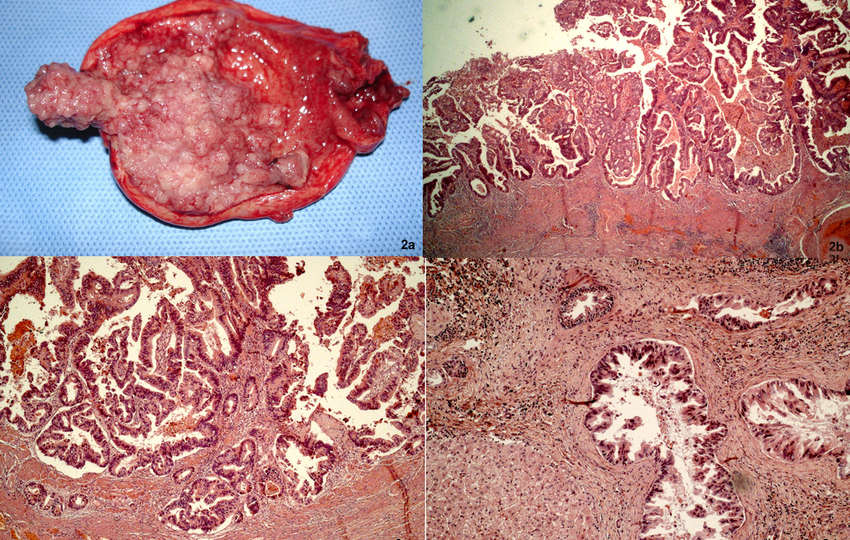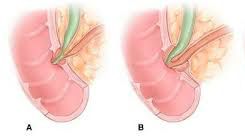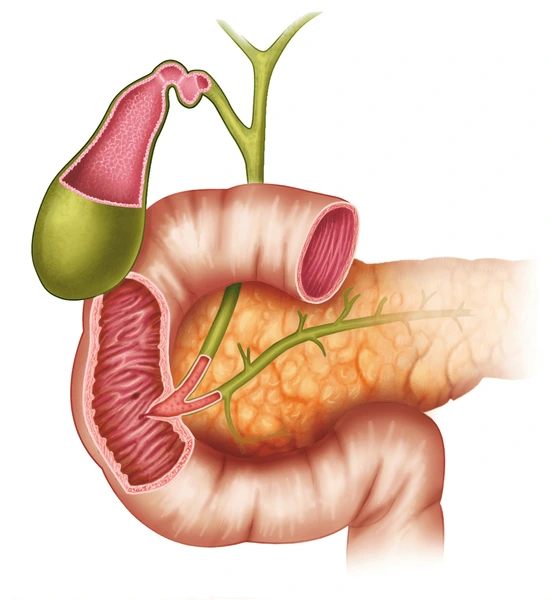
Anatomy and Function of the Vater’s Papilla
The Vater’s papilla is a small, raised area in the duodenum where both the bile duct and the pancreatic duct drain their contents. The bile duct carries bile, a substance produced by the liver that helps digest fats, while the pancreatic duct delivers digestive enzymes produced by the pancreas. The release of bile and pancreatic enzymes is regulated by the sphincter of Oddi, a muscle that controls the flow of these digestive juices into the small intestine.
Disruptions or obstructions of the Vater’s papilla can impede the flow of bile and pancreatic enzymes, leading to digestive problems and, in severe cases, more serious conditions such as jaundice, pancreatitis, or cholestasis.
Bile Duct Issues Affecting the Vater’s Papilla
The bile duct plays a crucial role in transporting bile from the liver and gallbladder to the duodenum. Several conditions affecting the bile ducts can lead to obstruction, inflammation, or even infection at the Vater’s papilla, disrupting normal digestion.
1. Gallstones and Their Impact on the Vater’s Papilla
Gallstones are solid particles that form in the gallbladder and can block the bile duct, especially if they travel through the common bile duct and become lodged at the Vater’s papilla. These obstructions can cause a variety of symptoms, including jaundice, abdominal pain, and digestive disturbances. When a gallstone obstructs the Vater’s papilla, it prevents bile and pancreatic enzymes from reaching the duodenum, which disrupts digestion.

Symptoms of Gallstones at the Vater’s Papilla
- Severe abdominal pain, often radiating to the back, typically after meals
- Jaundice (yellowing of the skin and eyes)
- Nausea and vomiting
- Dark urine and light-colored stools
- Fever, which may indicate infection
Treatment of Gallstones Affecting the Vater’s Papilla
Treatment of gallstones at the Vater’s papilla often requires endoscopic retrograde cholangiopancreatography (ERCP), a procedure used to remove the stones or place a stent to alleviate the blockage. In some cases, surgical intervention may be needed, particularly if the stones are difficult to remove through non-invasive techniques.
2. Bile Duct Strictures Near the Vater’s Papilla
A bile duct stricture refers to a narrowing or scarring of the bile duct, which can occur for several reasons, including chronic inflammation, surgical injury, or previous infections. When strictures form near the Vater’s papilla, they can obstruct bile flow, leading to conditions such as cholestasis (a reduction or stoppage of bile flow) and jaundice. In some cases, bile duct strictures near the Vater’s papilla may also obstruct the pancreatic duct, further compromising digestion.
Symptoms of Bile Duct Strictures
- Jaundice (yellowing of the skin and eyes)
- Abdominal pain, especially in the upper right quadrant
- Fatigue
- Nausea and vomiting
- Weight loss and malabsorption of nutrients
Treatment of Bile Duct Strictures
The treatment for bile duct strictures near the Vater’s papilla typically involves ERCP to dilate the stricture or place a stent. In more severe cases, surgical procedures such as biliary bypass surgery may be required to bypass the blocked section of the bile duct and restore proper bile flow.
3. Cholangiocarcinoma (Bile Duct Cancer)
Cholangiocarcinoma, or bile duct cancer, can occur at the level of the Vater’s papilla, where the bile and pancreatic ducts converge. This cancerous growth can obstruct the bile duct and pancreatic duct, causing jaundice, digestive issues, and potentially life-threatening complications. Cholangiocarcinoma is often diagnosed in the later stages, which can complicate treatment and prognosis.
Symptoms of Cholangiocarcinoma
- Persistent jaundice
- Unexplained weight loss
- Abdominal pain, particularly in the upper abdomen
- Dark urine and light-colored stools
- Itchy skin (pruritus)
Treatment of Cholangiocarcinoma
Treatment for cholangiocarcinoma depends on the extent and location of the cancer. Surgical options may include liver resection, biliary bypass, or liver transplant if the cancer is localized. Chemotherapy and radiation therapy are often used to treat advanced stages of bile duct cancer.
Pancreatic Issues Affecting the Vater’s Papilla
The pancreatic duct carries digestive enzymes from the pancreas to the duodenum. Any issues affecting the pancreas can also affect the Vater’s papilla, leading to digestive difficulties, jaundice, or inflammation of both the bile duct and pancreatic duct.
1. Pancreatitis and Its Impact on the Vater’s Papilla
Pancreatitis, the inflammation of the pancreas, can occur acutely or chronically. Acute pancreatitis is commonly caused by gallstones blocking the bile duct, while chronic pancreatitis is often the result of long-term alcohol use, infections, or genetic conditions. When the pancreatic duct becomes inflamed or obstructed, it can cause swelling at the Vater’s papilla, leading to digestive issues and the backup of bile.
Symptoms of Pancreatitis Affecting the Vater’s Papilla
- Severe abdominal pain, often radiating to the back
- Nausea and vomiting
- Jaundice
- Fever and chills (in case of infection)
- Fatigue and weight loss

Treatment of Pancreatitis Affecting the Vater’s Papilla
In cases of acute pancreatitis, treatment often involves hospitalization to manage symptoms such as pain and inflammation. IV fluids, nutritional support, and pain management are essential. If the Vater’s papilla is obstructed, ERCP may be used to remove the blockage and restore bile flow. For chronic pancreatitis, lifestyle changes, medications, and sometimes surgery are necessary to manage long-term complications.
2. Pancreatic Cancer and the Vater’s Papilla
Pancreatic cancer, particularly pancreatic head cancer, can affect the Vater’s papilla by obstructing both the bile and pancreatic ducts. This type of cancer is highly aggressive and is often diagnosed at an advanced stage, making treatment more challenging. When a tumor grows near the Vater’s papilla, it can block the flow of bile and pancreatic juices, leading to jaundice, weight loss, and severe digestive problems.
Symptoms of Pancreatic Cancer Affecting the Vater’s Papilla
- Unexplained weight loss
- Jaundice and dark urine
- Abdominal pain, especially in the upper abdomen
- Fatigue
- Digestive issues, including malabsorption of nutrients
Treatment of Pancreatic Cancer
Treatment for pancreatic cancer often involves surgical resection if the tumor is localized. Chemotherapy and radiation therapy are used for advanced cancer. If the Vater’s papilla is obstructed, a biliary bypass procedure or stent placement may be required to relieve symptoms and improve bile flow.
3. Sphincter of Oddi Dysfunction (SOD) and the Vater’s Papilla
Sphincter of Oddi dysfunction (SOD) refers to the abnormal function of the sphincter of Oddi, the muscle that controls the flow of bile and pancreatic juices into the duodenum. Dysfunction in this muscle can cause pain and bile or pancreatic duct obstruction, particularly at the Vater’s papilla.
Symptoms of Sphincter of Oddi Dysfunction
- Upper abdominal pain, often severe and cramp-like
- Jaundice
- Nausea and vomiting
- Bloating and indigestion
- Digestive disturbances
Treatment of Sphincter of Oddi Dysfunction
Treatment may include endoscopic sphincterotomy, where a small incision is made in the sphincter of Oddi to relieve the blockage. In some cases, medication and lifestyle changes can help manage the condition.
The Vater’s papilla plays a crucial role in the digestive system by allowing bile and pancreatic enzymes to flow into the duodenum. Any issues affecting the bile duct or pancreatic duct can disrupt this flow, leading to symptoms such as jaundice, abdominal pain, and digestive problems. Conditions such as gallstones, bile duct strictures, pancreatitis, pancreatic cancer, and sphincter of Oddi dysfunction can all have significant effects on the Vater’s papilla, making early diagnosis and treatment essential.
Prompt intervention through procedures like ERCP, medications, and in some cases, surgery, can help manage these conditions and restore normal function. It is essential for patients experiencing symptoms related to bile flow obstruction or digestive difficulties to seek medical attention to prevent complications and ensure proper treatment.
